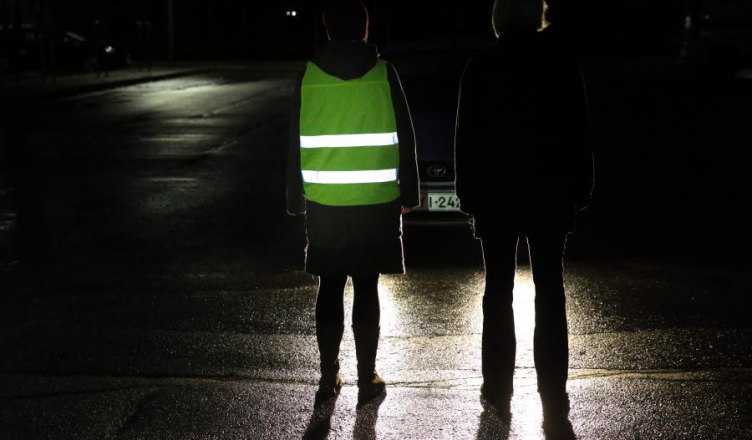More than one hundred pedestrians die on the roads every year. In the vast majority of cases, these are accidents at night or in poor visibility when the driver overlooks a pedestrian. Therefore, every person moving around the road should wear reflective material elements. Pedestrian hazards are highlighted by the ‘You Can Do It’ campaign run by the Lifebuoy Association.
It is no coincidence that at night the number of accidents related to a collision of a person is significantly higher than during the day. In normal visibility, the driver has more than ten seconds at speed to react to and avoid human movement. At night, reaction time is significantly reduced.
“When a vehicle is driving with high beams on, it will see pedestrians without reflectors at a maximum distance of 100 meters. If the vehicle is traveling at eighty kilometers per hour, the driver has less than five seconds to solve the situation. But if it only shines with the classic dipped beam, it sees pedestrians up to fifty meters away, which means that it has about two and a half seconds to react,” says Lukas Hutta from the Lifebuoy Association, which campaign ‘You Can Do It’.
However, the driver must also take into account the braking distance. “If the driver is doing his job properly, he can respond in about one second, which means he’ll be twenty-two meters away. However, the stopping distance at eighty kilometers is another 32 meters, which can be a disaster. Also, we have to add that this braking distance is only valid on dry roads, on wet asphalt it is ten meters longer,” adds Hutta.
Thanks to reflective elements you will be visible even from ten times greater distance.
Nevertheless, any pedestrian moving near the road can minimize the risk of an accident. All he needs to do is place reflective elements on the moving body, ideally on his wrists, forearms, and ankles. “If a pedestrian is wearing reflective tape elements, the driver can see him up to three hundred meters in the dark with the main beam on. This roughly corresponds to the distance that pedestrians would see during the day,” says Veronika Krajsová, President of the Lifebuoy Association, which brings together rescue bodies and other institutions with which she develops and implements projects related to information, education and prevention in common risk and emergency areas.
Even with the dipped beam, the driver on the pedestrian with reflective elements reacts in time. He could see him at a distance of one hundred and fifty meters. “Reflective elements save lives. But one should not be confused with fluorescent elements. These are obvious at first glance, but unlike reflective elements, they do not reflect light, so they are not visible from such a great distance. However, if you have a white or yellow jacket, you are seeing more than in dark clothes. Nevertheless, a person moving around the road at night should wear several reflective clothing elements, both in the city and in the village,” Krajsová adds.
The association implements a ‘You Can Do It’ campaign, featuring innovative instructional analytics videos based on real road accidents. “In our project, we present the viewers with a unique combination of real shots of IRS units from interventions together with accident analysis and a preventive emotional message from the rescuers’ mouths. Thanks to the analytical part and statements of rescuers intervening at the scene of the event, we acquaint the viewer both with the course of the intervention and mainly with the reasons for the accident and especially with the specification of errors. Our goal is to make the viewer aware of the risks and, of course, we wish to minimize the number of traffic accidents with this project,” Krajsová concludes.
